How to Remove Mold from Flooring
Oct 3, 2022
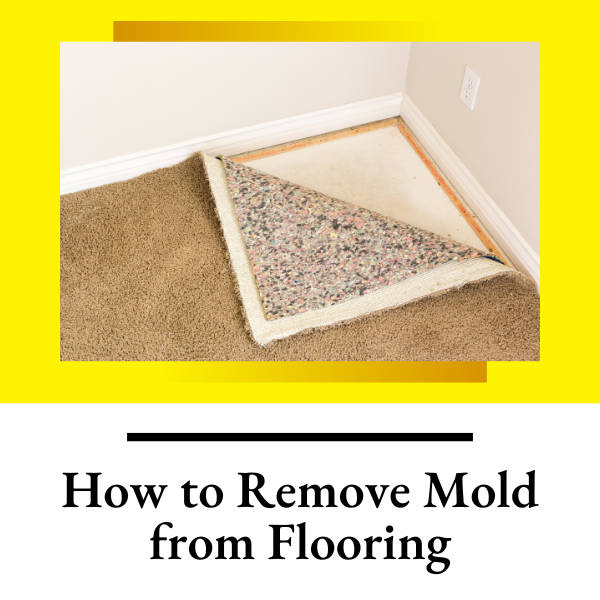
Mold can grow almost anywhere there’s been moisture for extended periods of time. Even your floors can grow mold if there’s enough water damage to your floors. Fortunately, there are methods you can use to clean mold that has grown on your floors so you may not need a complete flooring replacement. How to remove mold from your flooring does depend on what type of flooring you have, however.
How to Remove Mold from Wood Flooring
Hardwood floors can be beautiful when they’re well-maintained, but if mold grows on them, they could look stained. It’s important to clean the mold as soon as you notice it before it can spread. But how do you know there’s mold on your floor?
Signs Your Wood Floor Has Mold
Mold doesn’t just grow on the surface of your floor. It could also grow underneath it, which means that not all signs of mold are easily visible to the eye. Here are some signs that your floor might have mold.
- You can smell a musty odor
- The floor feels spongy when you walk on it
- You know the floor has been exposed to moisture
- Discoloration
- Warping
- Stains
- Visible mold spots, which can be:
- Dark
- Green
- White
- Yellow
- Fuzzy
- Powdery
Step #1
Gather the Materials You’ll Need to Remove Mold from Your Wood Floor
Before you get started, it’s a good idea to first collect everything you’ll need:
- Gloves
- Mask
- Safety glasses
- Bucket
- Spray bottle
- Micro-fiber cloth
- Easily washable clothing
- Garbage bag
- Sandpaper:
- Bleach solution
Sandpaper
The sandpaper can be 100, 200, or 250-grit and is used for getting out mold that is deep into the wood.
Bleach Solution
The bleach solution can be either a 10:1 or an 8:1 ratio of water to chlorine bleach. Remember that the water should make up the larger amount of the solution. Which you need depends on how deeply the mold has penetrated into your floor.
Step #2
Protect Yourself

When you’re working with bleach or other chemicals, it’s important to make sure that you’re protected. That’s what the gloves, mask, and safety glasses are for. You don’t want to breathe in the bleach solution, so make sure to wear the mask over both your mouth and your nose.
Step #3
Prepare Your Cleaner
There are mold removers available for purchase that you can use on your floor. If you prefer to make your own instead, you’ll need to dilute chlorine bleach so it’s safe to use. A ratio of 10:1 or 8:1 is appropriate, depending on the penetration level the mold has reached into the wood. Store-bought cleaners also typically come in those ratios, so if you’re buying, you’ll need to look for the one that suits your needs.
Step #4
Spray the Cleaner on the Mold
Once you have your cleaner solution ready in a spray bottle, spray it on the mold. The first step to actually cleaning away the mold is to get at the surface mold. Spray the areas affected by the mold with the cleaner and then let it sit for at least 10 minutes. Then, just wipe it off with a cloth.
Don’t leave the cleaning solution on too long
Bleach solutions can eventually start to eat away at the finish on your wood floors.
Step #5
Scrub Away the Deeply Ingrained Mold
Sometimes, mold gets deeply ingrained within the wood. If this is the case, the cleaning spray isn’t going to be enough to remove it. Some, you may be able to scrub away with a scrubbing brush. If that doesn’t work, however, you may need to use sandpaper:
- Use large fans to completely dry out the affected wood
- Use 100-grit sandpaper on the easier mold on top
- Switch to 220-grit sandpaper for the tougher stuff underneath
- Use a scraping tool on whatever is left
- Spray the diluted bleach solution or cleaner on the area to prevent future mold
- Cut out and replace any wood that is affected all the way through to the baseboards
- Put on a finish that matches the rest of your floor
How to Remove Mold from Tile
Removing mold from tile flooring is very easy. Just spray it with the cleaner or chlorine bleach solution and wipe it away.
How to Remove Mold from Linoleum
Just like tile, you can remove mold from linoleum by using a bleach-based cleaner. If the mold has stained the floor, try using a mixture of baking soda and vinegar and then scrubbing with a brush where the stain is to get it off.
How to Remove Mold from Carpeting
Mold isn’t quite as easy to get out of the carpet. Typically, if there’s mold on your carpet, it will be visible as dark or green stains and will be a result of moisture or water damage to the carpet. Sometimes, however, mold can grow on the underside of the carpet, in which case you’d have to look for musty odors and increased allergies.
Step #1
Ventilate the Room
The first step in cleaning mold out of your carpet is to completely ventilate the room. Open the doors and the windows to clear out the smell. This will also help you to protect yourself from inhaling mold spores while you work.
Step #2
Check Underneath the Carpet
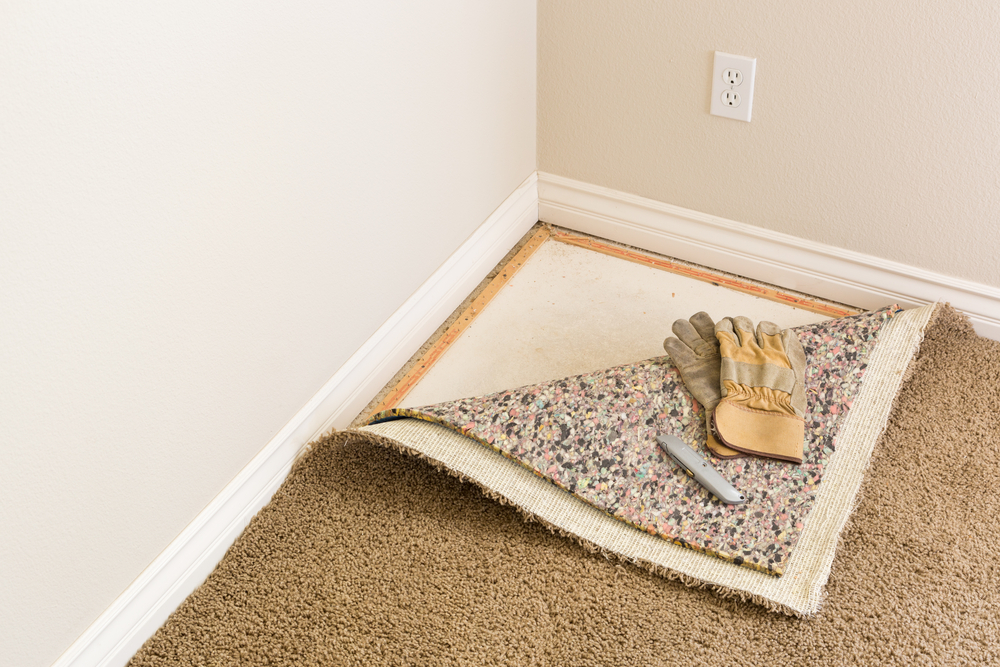
If the mold is just on top and in a small area, then it’s cleanable. If it’s underneath, however, you’ll need to replace the carpet. If it’s contained in one area, you can replace just that section. If it’s widespread, you’ll need to replace the entire carpet.
Step #3
Put Baking Soda on the Mold
For surface mold, sprinkle baking soda on it. Baking soda will absorb the moisture from the carpet as well as the odor. You’ll need to let it sit overnight.
Step #4
Use Vinegar to Clean the Mold
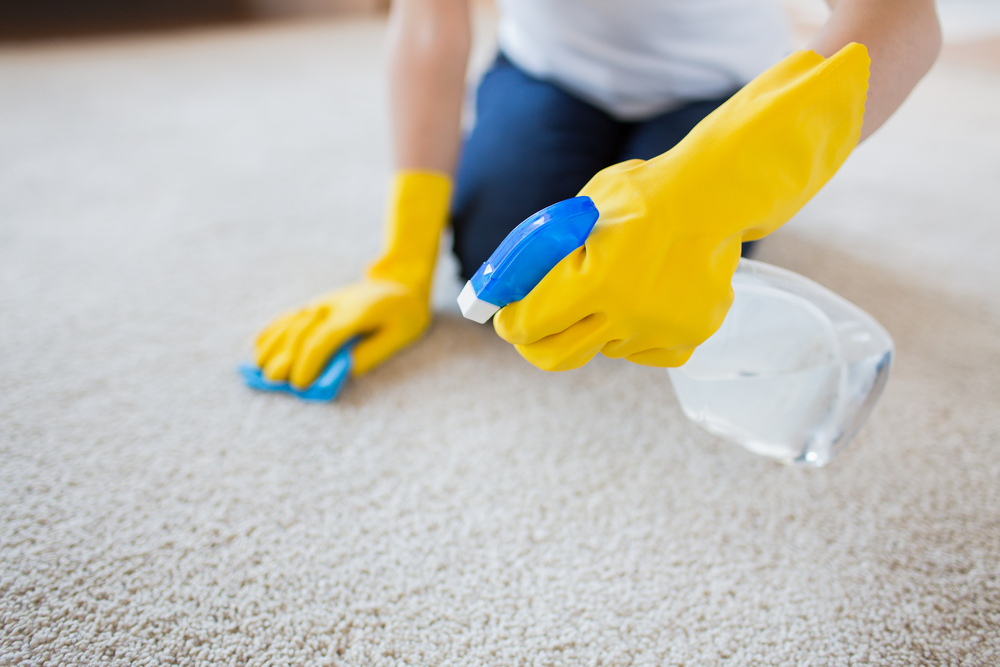
The next day, you can spray vinegar on the mold spots and use a scrub brush that has a handle to rub it away. You should also do this for the underside of the carpet.
Step #5
Spray Anti-Fungal Solution on the Carpet
If using baking soda and vinegar didn’t work, try an anti-fungal solution instead. You can purchase these from a hardware store or online. Be sure to follow the instructions exactly so you know that you’re cleaning safely.
Step #6
Vacuum or Sweep Away the Mold
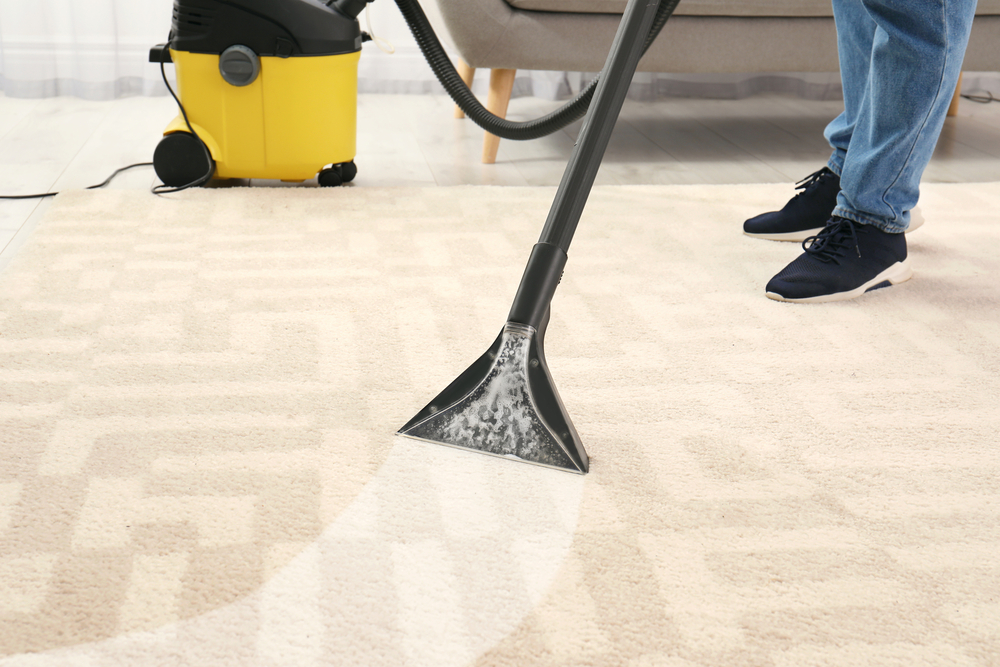
Next, you’ll need to get the mold spores off of your carpet. If your vacuum cleaner has a HEPA filter, then feel free to vacuum. If it doesn’t, you’ll need to use a broom and a dustpan because your vacuum won’t be able to safely contain the mold. Whichever you use, make sure to empty the spores into a plastic garbage bag so you can immediately throw them away.
Consider Hiring a Professional to Clean Your Floor
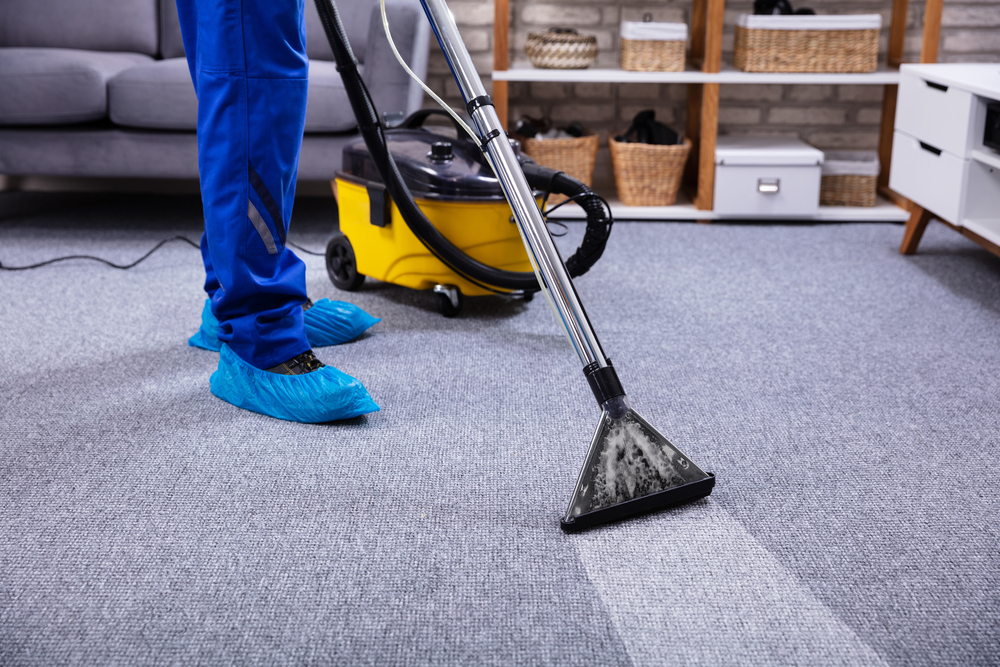
Getting mold out of a wood floor or carpeting can be difficult if the mold or stain from the mold is stubborn. A professional is better equipped to do the job properly and more quickly than a homeowner may be able to. If you’ve tried to get the mold out of your floor but haven’t been successful, it may be time to hire a professional to do it for you.

